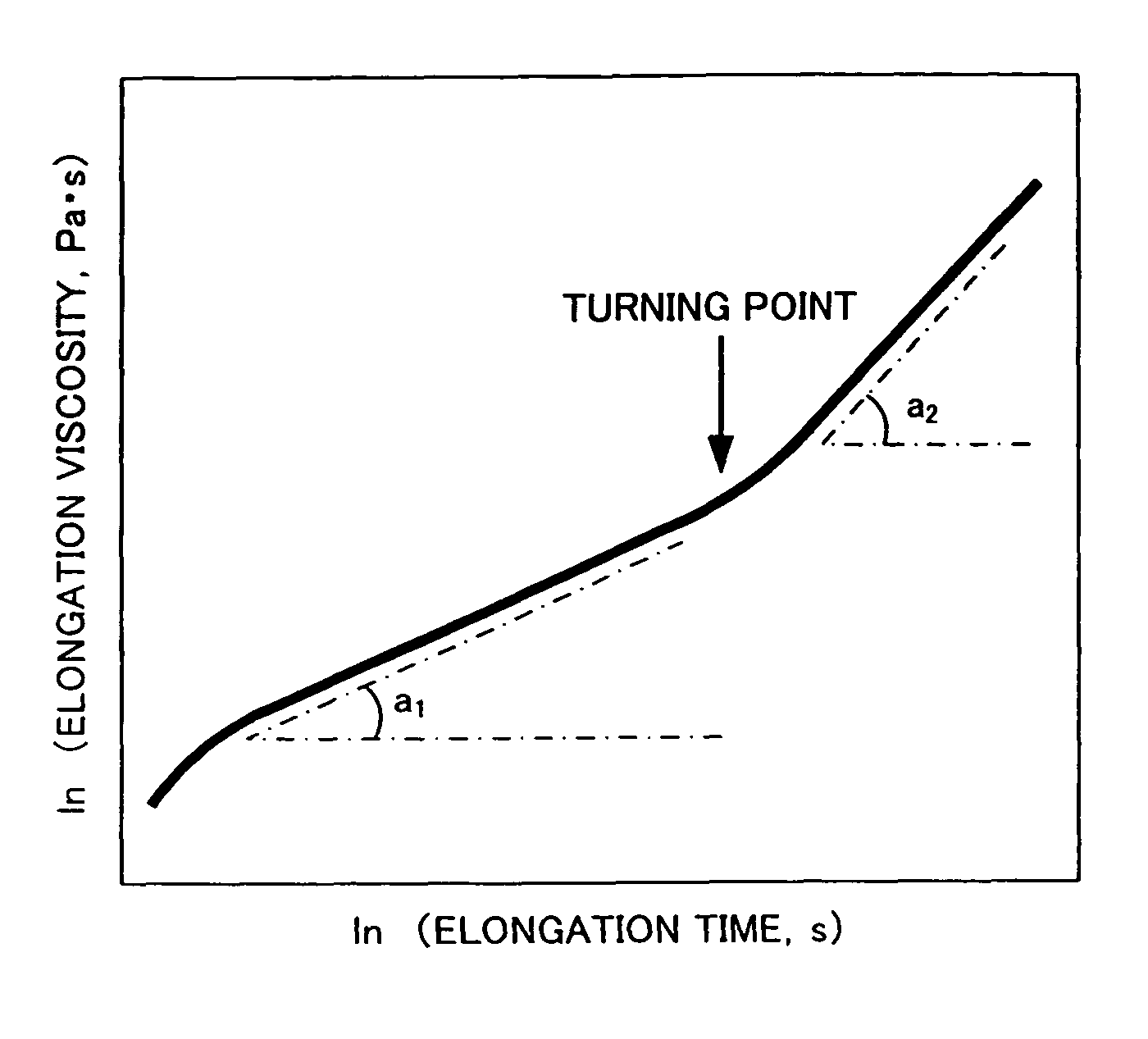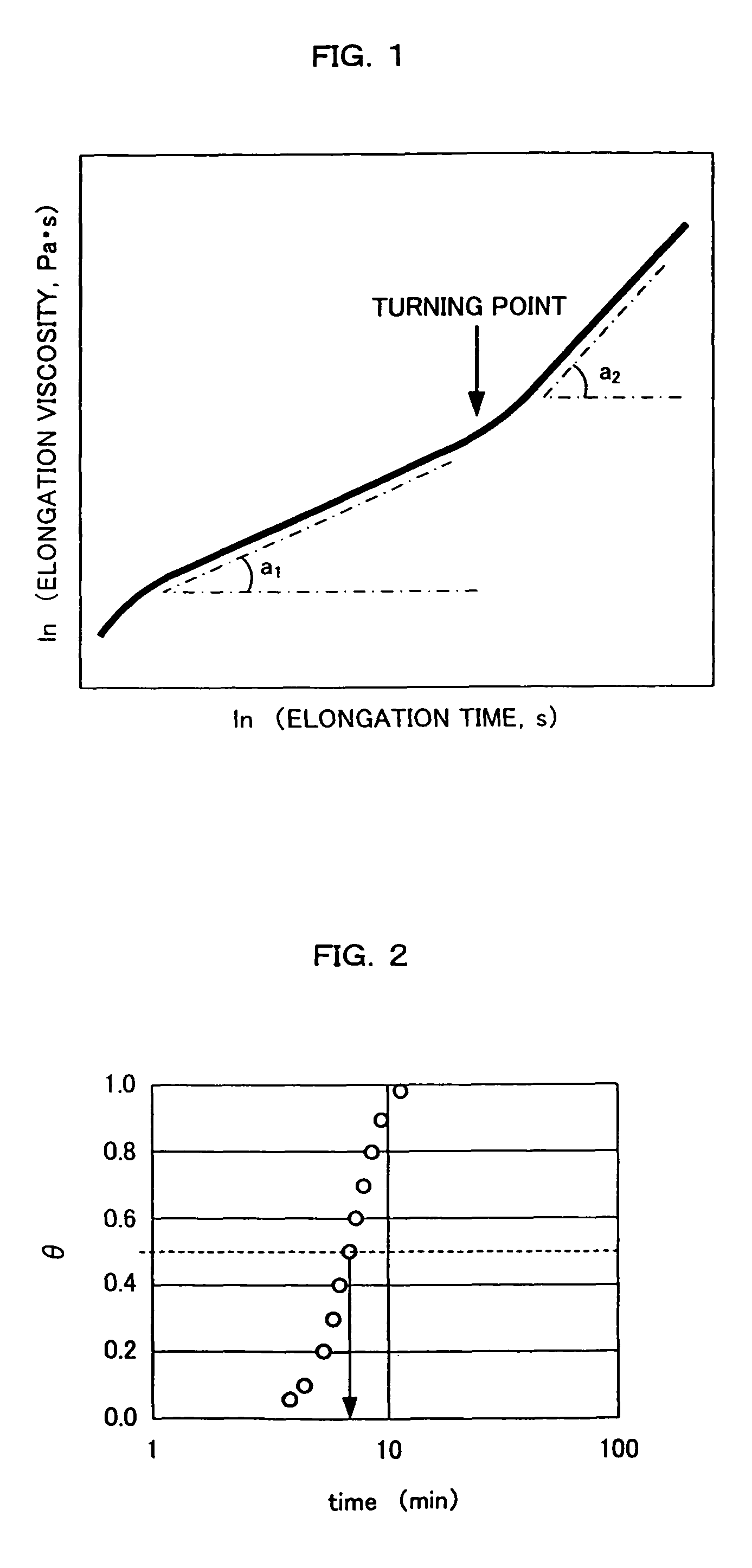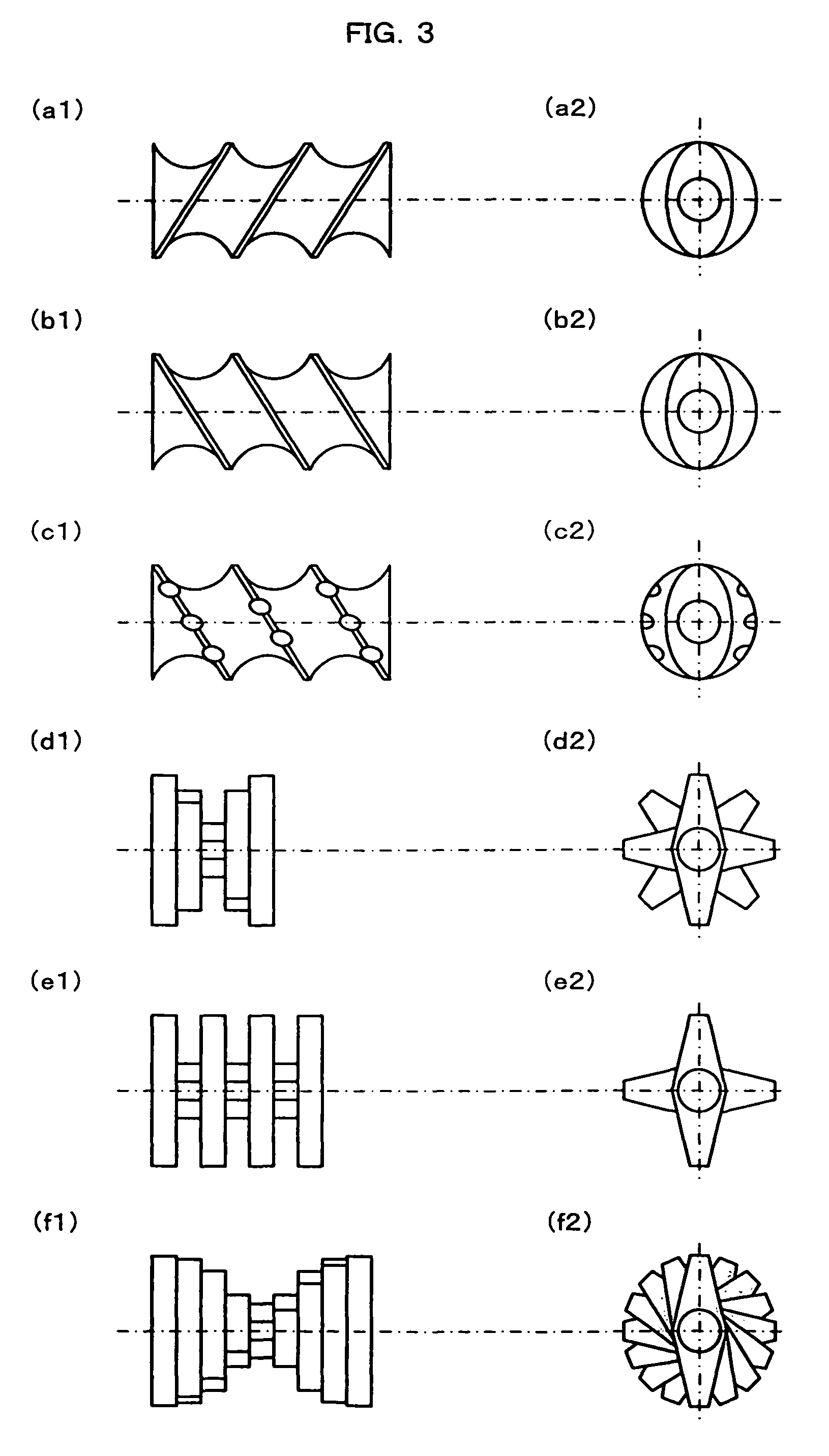Biodegradable polyester resin composition, preparation method therefor, and foamed article and molded article produced therefrom
a biodegradable polyester and resin composition technology, applied in the field of biodegradable polyester resin composition, preparation method therefor, and production of foamed articles and molded articles, can solve the problems of social problems, lower heat resistance and mechanical strength, and lower crystallization speed of biodegradable aliphatic polyester, and achieve excellent mechanical strength and heat resistance and rheology, and easy preparation
- Summary
- Abstract
- Description
- Claims
- Application Information
AI Technical Summary
Benefits of technology
Problems solved by technology
Method used
Image
Examples
example 1
[0117]With the use of a twin screw kneader having double thread screws (TEM-37BS available from Toshiba Machine Co., Ltd.), a resin composition was prepared. The twin screw kneader was constructed in the following manner. A deep normal lead screw and a shallow normal lead screw were provided in a resin feeding section. Downstream of the resin feeding section, two neutral kneading disks and a reverse lead screw were provided, and a normal lead screw portion was further provided, in which a liquid was injected. A kneading section including screws and kneading disks as shown in FIG. 3 was define immediately downstream of the normal lead screw portion. More specifically, (d), (d), (e), (e), (d), (d), (e), (b), (c) and (a) were provided in this order in the kneading section. The kneader was constructed so as to allow the ingredients to pass through the kneading section and, after vent suction, extrude the resulting resin composition into strands from a die including three holes each havi...
example 20
[0136]The biodegradable polyester resin composition of Example 1 was used as a material, and a tandem extrusion foaming machine (of a single-axis screw type with EXT-1=50 mmφ and EXT-2=50 mmφ including a die of 1.5 mmφ×28 Hls). While 10% of butane gas was injected as a foaming agent into the resin composition, the biodegradable polyester resin composition was kneaded under the following conditions: a melting temperature of 200° C., an EXT-2 temperature of 150° C., a die temperature of 135° C. and an extrusion rate of 7.5 kg / hr. Thus, a reticulate foam was obtained. Although the foam had open cells, the expansion ratio was 36. The reticulate foam had a uniform surface and very good appearance.
example 21
[0137]The biodegradable polyester resin composition of Example 13 was used as a material. As a foaming agent, 1.5 mass % of a thermally decomposable foaming agent of an azodicarbonamide (VINYHOLE AC#3 available from Eiwa Kasei Co. Ltd.) was dry-blended with the resin composition, and the foaming test was performed. That is, a T-die test machine having a single-axis screw diameter of 55 mm (Throuzer's 3.5-stage static mixer having a slit length of 500 mm and a slit width of 1.2 mm) was used, and a sheet was formed under the following conditions: a melting temperature of 210° C., a T-die temperature of 160° C., a screw rotation speed of 16 rpm, and an extrusion rate of 3 m / min. The sheet was a uniformly foamed closed cell sheet having an expansion ratio of 5.5. The sheet was free from larger gel particles, and had very good appearance.
PUM
| Property | Measurement | Unit |
|---|---|---|
| melting point | aaaaa | aaaaa |
| melting point | aaaaa | aaaaa |
| temperature | aaaaa | aaaaa |
Abstract
Description
Claims
Application Information
 Login to View More
Login to View More - R&D
- Intellectual Property
- Life Sciences
- Materials
- Tech Scout
- Unparalleled Data Quality
- Higher Quality Content
- 60% Fewer Hallucinations
Browse by: Latest US Patents, China's latest patents, Technical Efficacy Thesaurus, Application Domain, Technology Topic, Popular Technical Reports.
© 2025 PatSnap. All rights reserved.Legal|Privacy policy|Modern Slavery Act Transparency Statement|Sitemap|About US| Contact US: help@patsnap.com



